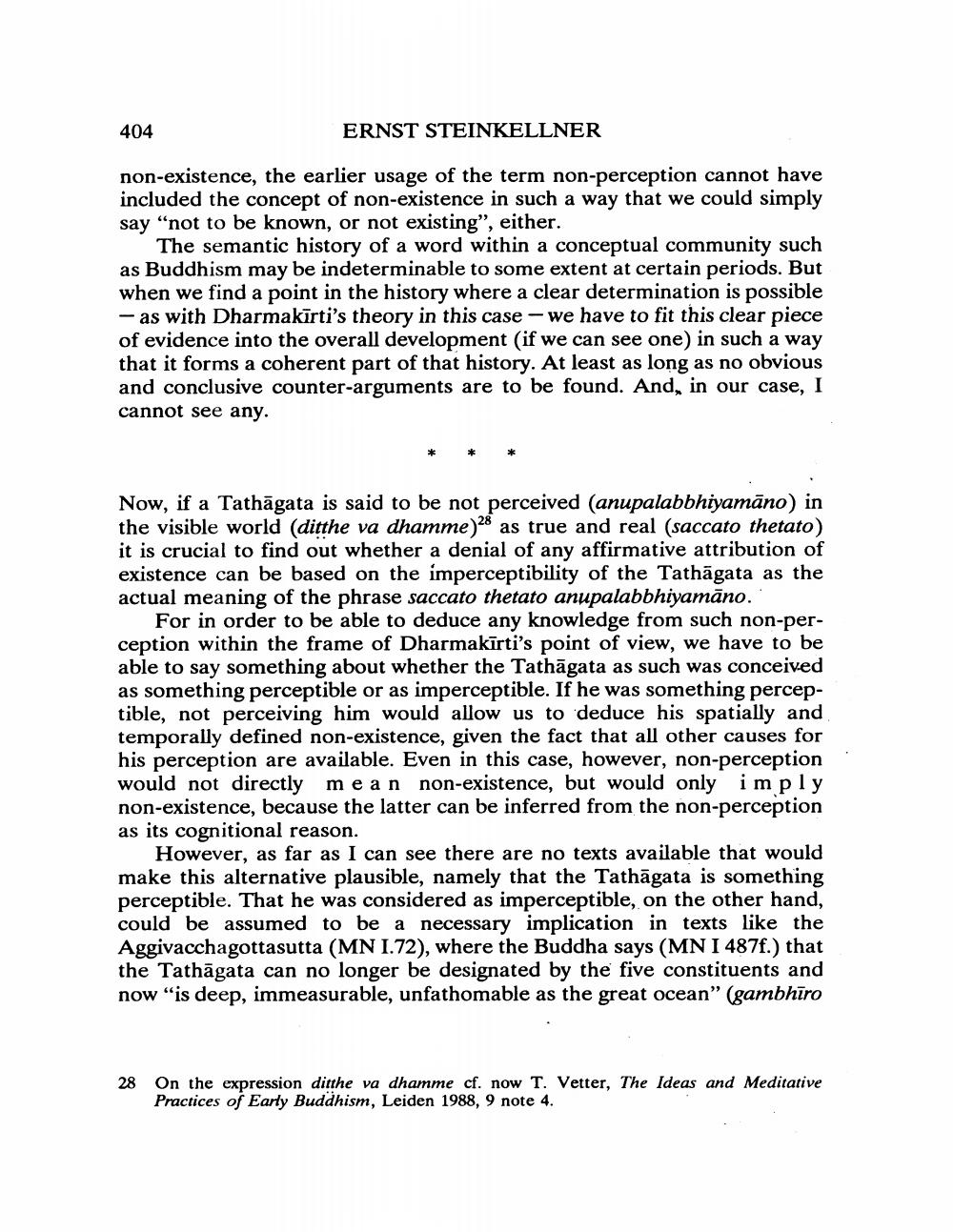Book Title: Lamotte And Concept Of Anupalabdhi Author(s): Ernst Steinkellner Publisher: Ernst Steinkellner View full book textPage 7
________________ 404 ERNST STEINKELLNER non-existence, the earlier usage of the term non-perception cannot have included the concept of non-existence in such a way that we could simply say “not to be known, or not existing", either. The semantic history of a word within a conceptual community such as Buddhism may be indeterminable to some extent at certain periods. But when we find a point in the history where a clear determination is possible -as with Dharmakīrti's theory in this case - we have to fit this clear piece of evidence into the overall development (if we can see one) in such a way that it forms a coherent part of that history. At least as long as no obvious and conclusive counter-arguments are to be found. And, in our case, I cannot see any. * * * Now, if a Tathāgata is said to be not perceived (anupalabbhiyamāno) in the visible world (ditthe va dhamme)28 as true and real (saccato thetato) it is crucial to find out whether a denial of any affirmative attribution of existence can be based on the imperceptibility of the Tathāgata as the actual meaning of the phrase saccato thetato anupalabbhiyamāno. For in order to be able to deduce any knowledge from such non-perception within the frame of Dharmakīrti's point of view, we have to be able to say something about whether the Tathāgata as such was conceived as something perceptible or as imperceptible. If he was something perceptible, not perceiving him would allow us to deduce his spatially and temporally defined non-existence, given the fact that all other causes for his perception are available. Even in this case, however, non-perception would not directly mean non-existence, but would only imply non-existence, because the latter can be inferred from the non-perception as its cognitional reason. However, as far as I can see there are no texts available that would make this alternative plausible, namely that the Tathāgata is something perceptible. That he was considered as imperceptible, on the other hand, could be assumed to be a necessary implication in texts like the Aggivacchagottasutta (MN 1.72), where the Buddha says (MN I 487f.) that the Tathāgata can no longer be designated by the five constituents and now “is deep, immeasurable, unfathomable as the great ocean" (gambhīro 28 On the expression ditthe va dhamme cf. now T. Vetter, The Ideas and Meditative Practices of Early Buddhism, Leiden 1988, 9 note 4.Page Navigation
1 ... 5 6 7 8 9 10 11 12 13
